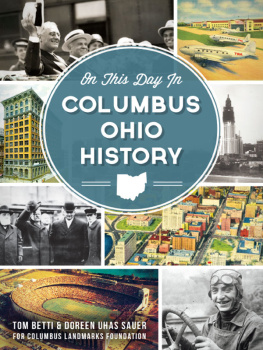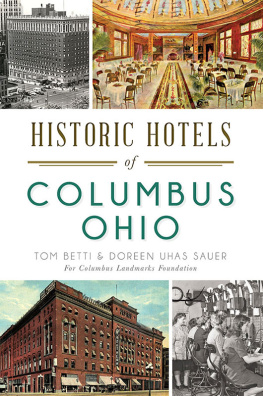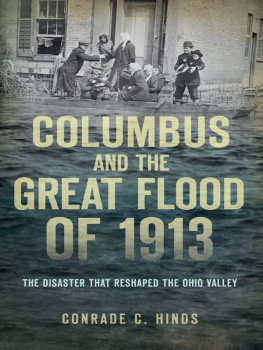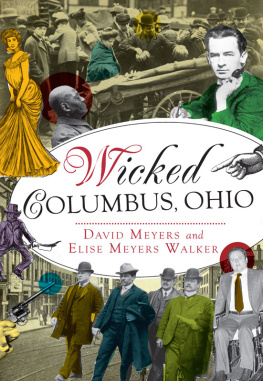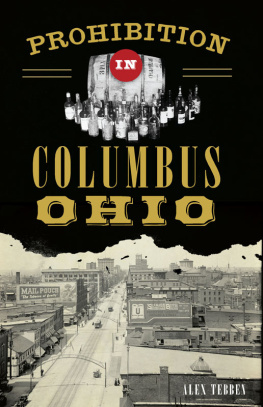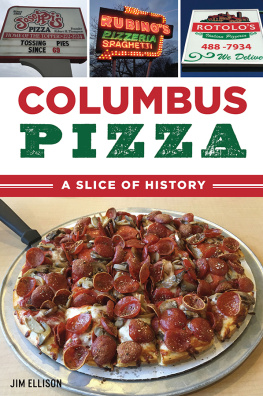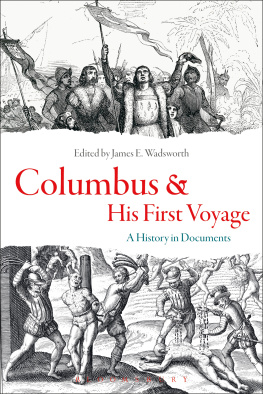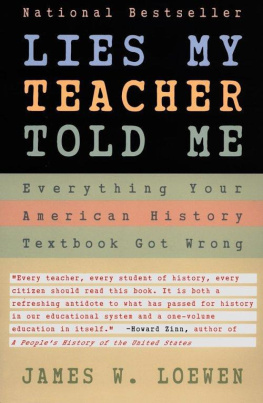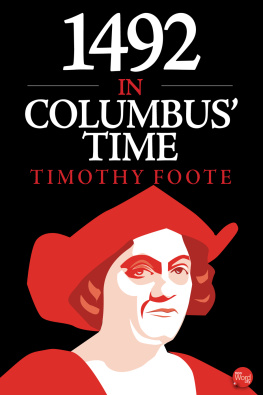

Published by The History Press
Charleston, SC 29403
www.historypress.net
Copyright 2013 by Tom Betti and Doreen Uhas Sauer
All rights reserved
All images appear courtesy of the Columbus Metropolitan Library Image Collections (CML), Columbus Landmarks Foundation (CLF), Franklinton Historical Society (FHS) and Dr. Ivan Gilbert (IG).
First published 2013
e-book edition 2013
Manufactured in the United States
ISBN 978.1.62584.574.0
Library of Congress CIP data applied for.
print edition ISBN 978.1.60949.668.5
Notice: The information in this book is true and complete to the best of our knowledge. It is offered without guarantee on the part of the author or The History Press. The author and The History Press disclaim all liability in connection with the use of this book.
All rights reserved. No part of this book may be reproduced or transmitted in any form whatsoever without prior written permission from the publisher except in the case of brief quotations embodied in critical articles and reviews.
Dedicated to Columbus Landmarks Foundation supporters and the Education Committee members who believe that without a story, a brick is just a brick.
CONTENTS
ACKNOWLEDGEMENTS
This book would not have been possible without the contributions of Columbus Landmarks Foundations research volunteers and the work of local historians who publish and made their work available: Richard Barrett, David Binkovitz, Leslie Blankenship, Becky Ellis, Ed Lentz, Theresa Carsten, Brenda Dutton, Conrade Hinds, Laurie Hermance-Moore, Ann Seren and Terry Sherburn. Thank you to the Columbus Landmarks Board of Trustees and president Bill Mattes for their encouragement and a special thank you to Toms parents, Sam and Lena, and sister Gina. Thank you also to the Columbus Metropolitan Library and Joe Gartrell and Darcy Mahan of The History Press.
INTRODUCTION
It seems only fitting to start the first day of an almanac with a reference to a previous almanacthe Columbus Almanac of 1818. William Lusk was the author, and P.H. Olmstead was the printer. Nineteenth-century almanacs generally were composed of calendars, origins of the months names, a list of roads and distances, the setting and eclipses of the sun and the moon (always helpful on dark roads) and promotional boasts. Lusk wrote of Columbus, Few towns in the United States are so pleasantly situated for a delightful rural prospect, for fertile neighborhood or health. And, during the whole time of the settlement of this town, the health of the citizens has been almost unparalleled (yeah, except for that pesky miasma and cholera epidemics). He praised the care and vigilance of the keeper at the Ohio Penitentiary who, despite the responsibility of forty-eight convicts, had not suffered one convict to escape. (The first pen was little more than a hole in the ground.) If Lusk were correct and the little town of Columbus had a population of 1,200, that means 4 percent of them were felons.
JANUARY
January 1
Chief Between-the-Logs of the Wyandot tribe died on this date in 1827 from tuberculosis and the effects of a winter trip to plead on behalf of the Christian Native Americans who lived primarily in Upper Sandusky, Ohio. He spoke without interpreters. He was a Christian and a Methodist minister, married to the sister of David Beers, founder of North Columbus. When David was seven years old, he, his mother and his baby sister were taken captive by Indians and separated. Raised by Indians, Davids sister was later married to three successive tribal leaders, the last of whom was Chief Between-the Logs. As he was dying, Chief Between-the-Logs pleaded that the Wyandots not be pushed from their land. However, there were less than twenty years remaining before the Wyandots would be removed. Their lands appraised at $125,937.24, but the money was never paid to them. In Columbus, an observer standing on South High Street in the 1840s recorded that he saw a band of Wyandots as they rode into Columbus to take trains from the Union Depot (where the Convention Center is today), heading for St. Louis and the Kansas territories. As the Wyandots were leaving, German families arrived by canal and railroad. Other German immigrants already in Columbus had decided also to move on for new opportunities, boarding trains to go farther west, where they founded the towns of New Columbus and Deshler, Nebraska.
January 2
The P.W. Huntington & Co. bank opened for business in 1866 on this date. It was said on many mornings, Pelatiah Huntington, the founder, picked up small sticks on the way to work to put into the stove to heat his office, but this may be only an illustration of his thrifty nature. Similar stories are told about other banking families, like that of Mr. Zinn, who founded the Great Northern Bank (later a Huntington Bank and now the Ace of Cups bar) in North Columbus. Zinn was said to have acquired a perpetual kink in his neck from looking down to scour the streets for pennies and nickels as he walked to work. Mr. Huntington, the son of a banker and a descendant of a signer of the U.S. Constitution, could have coasted on his familys credentials but chose instead to set out on his own, serving on a whaling ship, the character builders of their day. Huntington came in 1853 when the city was a growing crossroads. He went from messenger to board of directors at the Exchange Bank in thirteen years and was profoundly influenced by a speech he heard on the National Currency Act that emphasized that the stability of a bank should be a reality and not a fiction. Though he was a careful businessman, Huntington forgot to renew the charter of the Exchange Bank, and due to this inaction, that bank closed and his own bank opened.
January 3
Columbuss annexation policies did not begin with Mayor M.E. Sensenbrenner, who served from 1954 to 1959 and again from 1964 to 1971. He was credited with tripling the size of the city by extending Columbuss water and sewage services to townships outside city limits. By 1909, on this date, Columbus annexed an additional five square miles to create fifty new voting precincts, becoming Ohios third-largest city. The motive was to bring in additional tax revenue to pay for existing infrastructure sewer and water expenses within the city. It didnt hurt that it also kept the temperance groups happy. Columbus citizens only had to go south past the citys jurisdiction through Little Germany (German Village) or north to Milo-Grogan (Cleveland Avenue) for a beer on Sunday afternoons.
January 4
A large civic celebration heightened the dedication of Memorial Hall in 1906, making the East Broad Street structure the nations second-largest auditorium in seating capacity. Built to honor Civil War veterans, it was so long in coming that it also honored Spanish American War veterans. Memorial Hall, for years the quintessential white elephant after the building of Veterans Memorial on West Broad Street in the 1950s, found new life as the first Center for Science and Industry and, years later, was remodeled and refurbished for Franklin County.

Horse-drawn carriages pull up in front of the newly dedicated Franklin County Memorial Hall. CLF.
January 5
The Ohio legislature began to occupy the nearly completed statehouse in 1857, despite fears that the unsupported stairs were free-floating and would collapse. The stairs were connected to the floors but were not attached to a wall and had no supports from underneath. A marching band was hired to test their strength.
Next page
